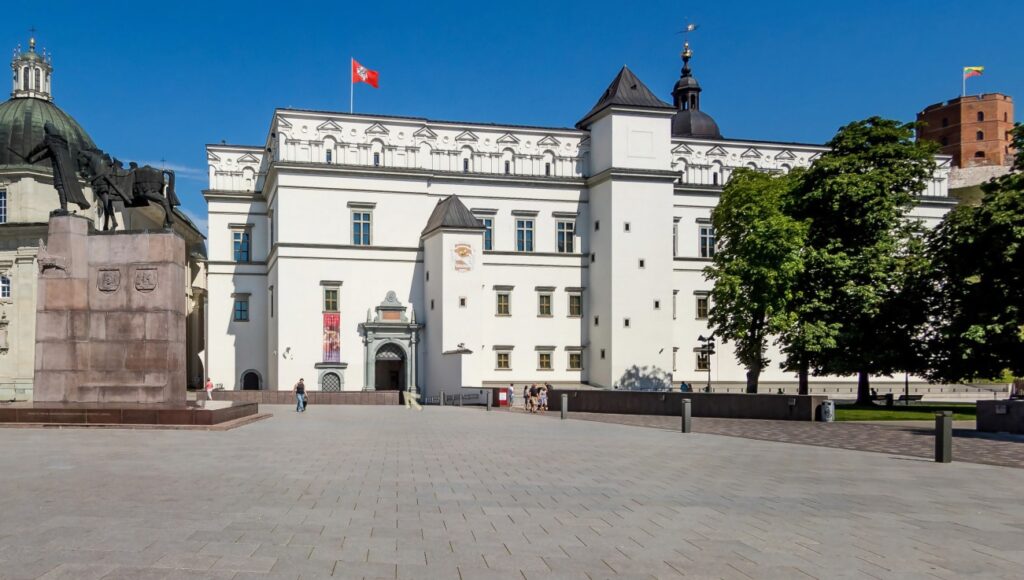Gediminas’ Tower
Introduction

The only western tower of the Upper Castle which has survived till now is traditionally called Gediminas’ Tower . It was renamed after the Grand Duke of Lithuania, Gediminas. It is the only remnant of the 15th century castle which was built during the reign of the Grand Duke of Lithuania Vytautas.
When the Lower Palace was razed to the ground at the beginning of the 19th century. The tower on top of the hill became an inseparable part of the panoramic view of the city. Its main accent symbolizing the glorious past and military power of the former state. Over the centuries it was destroyed by wars and time. Its appearance underwent many changes.
After the uprising was suppressed in 1831, the Upper Castle became part of the Vilnius military stronghold. By order of the Tsar the tower was turned into a guard post. Later when the upper storey of the tower was torn down, a wooden superstructure was built.
Short History of Gediminas’ Tower

In the middle of 19th century the tower passed into the hands of the Engineering Department of the Russian Defense Ministry. The flag with the two-headed eagle was raised on top. At the end of the 19th century Gedminas’ Hill became part of the city park. Having paid a small entrance fee you could climb up to the hill to the ruins of the Upper Castle. The firemen were carefully watching the city from the top of the tower. Soldiers were firing cannons to declare noon as was customary in many cities of the Russian Empire.
The cannons would destroy the walls of the tower for ten years until it was decided to construct the water tower on the hill. The members of the Lithuanian Scholarly Society initiated a movement for the protection of such a valuable cultural and historical monument of the Lithuanian nation. They succeeded. It was only in the 20th century that attention was paid to the structure.
Tricolor Flag on Top of Gediminas’ Tower

After the restitution of the Lithuanian state in 1918, the national flag of Lithuania was raised on top of the Gediminas’ Tower. It was on January 1, 1919 for the first time. At that time the tricolor, the symbol of the three Lithuania, was raised by volunteers. January 1 became a national day – Day of the Lithuanian Flag.
1920 the Lithuanian tricolor was raised above the city for the second time when the Lithuanian soldiers came back to Vilnius. 1939 the occupied city of Vilnius was returned to Lithuania. The flag was once more flying on Castle Hill. The Lithuanian tricolor raised over Gediminas’ Tower in 1988 is still there. Gediminas’ Tower have been a witness to Lithuanian’s flourishing times and the signature of the Acts of independence. It has become a landmark of our statehood and was an inspiration for our nations’ rebirth.
Every year on this day the soldiers solemnly raise the Lithuanian tricolor on Gediminas’ Tower.
In 1930 the wooden superstructure was pulled down and the third storey in brick with an observation platform was built. At the end of World War II the tower was once again damaged.
In 1960 it was renovated as a museum. That same year the 550th anniversary of the Žalgiris battle was officially commemorated in Vilnius. A memorial stone was unveiled on Gediminas’ Hill. The last renovation of the tower took place in 1995.


